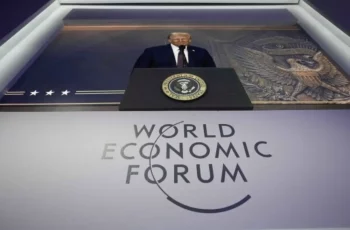
Despite its unique identity, the Land of the Rising Sun increasingly associates itself with the Anglo-Saxons and Europe.
Two weeks ago, Japan has taken another important step toward deepening ties with individual members of the ‘Five Eyes’ intelligence group by inking a classified information-sharing deal with Canada. The Security of Information Agreement (SIA) was signed by Foreign Minister Takeshi Iwaya and his Canadian counterpart, Anita Anand in a ceremony in Tokyo on July 8.
The legally binding instrument, which must still be ratified by parliament, will regulate how sensitive information will be shared, handled, stored and disposed of by the two sides. While the agreement does not itself authorize information exchanges or specify what data will be exchanged, it is seen as an important step to deepen bilateral defense and security ties.
In November 2024, Japan for the first time hosted a meeting of senior enlisted service members from the ‘Five Eyes’ intelligence partnership, without being a member of this structure which binds together English-speaking countries.
The move highlights the growing cooperation between Tokyo and its Western allies amid shared concerns about a rapidly deteriorating international security environment. The meeting with members from the grouping – comprising the United States, Britain, Canada, Australia and New Zealand – took place as part of a broader conference held in Tokyo among senior enlisted personnel from across the Japan Self-Defense Forces.
In December 2024, Bloomberg acknowledged that “Tokyo’s inclusion in the club is long overdue, especially as the region combats China’s growing assertiveness and the unpredictability of North Korea’s nuclear ambitions. The group shouldn’t waste any more time to take advantage of Tokyo’s expertise. It has one of the world’s biggest intelligence-gathering establishments and has long had eyes on China and North Korea, both considered among the nation’s biggest security threats. That knowledge would prove invaluable for the Washington-led coalition, under pressure from an increasingly hostile environment.”
Although the issue of Japan joining this coalition of intelligence services was raised much earlier. The Washington-based Center for Security Policy lobbied for this issue back in 2020, pointing out that “Letting Japan into the ‘Five Eyes’ would be a big step for both ‘Five Eyes’ nations and the Japanese. But things are getting tougher in East Asia, and that looks to continue. It’s a roll of the dice, but maybe it’s time to make the ‘Five Eyes’ into ‘Six Eyes’”.
It is important for the United States to enlist Japan‘s participation in containing China, which is no secret.
As the German Institute for International and Security Affairs pointed out in its June analytical research paper, “Japan views China’s growing influence in Southeast Asia as a major foreign policy challenge and is seeking to prevent the emergence of a hierarchical order centred around China. It has economic as well as foreign and security policy interests in the region. Tokyo’s engagement in Southeast Asia aims to uphold the rules-based multilateral order in the region, underpinned by US involvement. Of particular significance is Tokyo’s commitment to shared rules, principles and norms – for example, in the areas of free trade, infrastructure development and maritime security. In its security policy, Tokyo is committed to complying with the general rules and regulations enshrined in the UN Convention on the Law of the Sea…”
Japan is intensifying its relations both with countries that are more critical of China – such as the Philippines – and with those considered more aligned with China – such as Cambodia. By offering to cooperate, Japan provides Southeast Asian countries with alternatives to Chinese initiatives and thereby prevents China from monopolising the region.
For this reason, the United States and its satellites, including the EU, welcome Japan’s interest in preserving the “rules-based order” in Southeast Asia, including getting on their side ASEAN countries.
That said, the United States is betting more on forceful deterrence of China and, potentially, North Korea. After the meeting between Donald Trump and Shigeru Ishiba on February 7, 2025 in Washington, U.S. Secretary of Defense Pete Hegseth met with Japanese Defense Minister General Nakatani on March 29 in Tokyo.
The issue of Taiwan was discussed, to which Secretary of Defense Hegseth stated that “Japan would be on the front lines of any contingency we might face in the western Pacific,” and that “America is committed to sustaining robust, ready and credible deterrence in the Indo Pacific, including across the Taiwan Strait.” Mr Nakatani reiterated that “peace and stability across Taiwan Strait is important for Japan’s national security.”
However, Tokyo does not rely 100% on the United States for dual-use technology. Not long ago, it became known that Japan and the European Union plan to develop an extensive communication satellites network, as follows from the draft agreement prepared for the Japan-EU summit scheduled for July 23. This is done as part of an effort to reduce reliance on US companies like SpaceX.
The odds are that Japan is sending a message to the administration of Donald Trump, who promised to impose 25 percent tariffs on imports of all Japan-made cars and spare parts from August 1.
In any case, the US has hooked Japan by having deployed a total of 90 military bases and installations on its territory, where 53, 700 American military personnel are stationed.










Comments